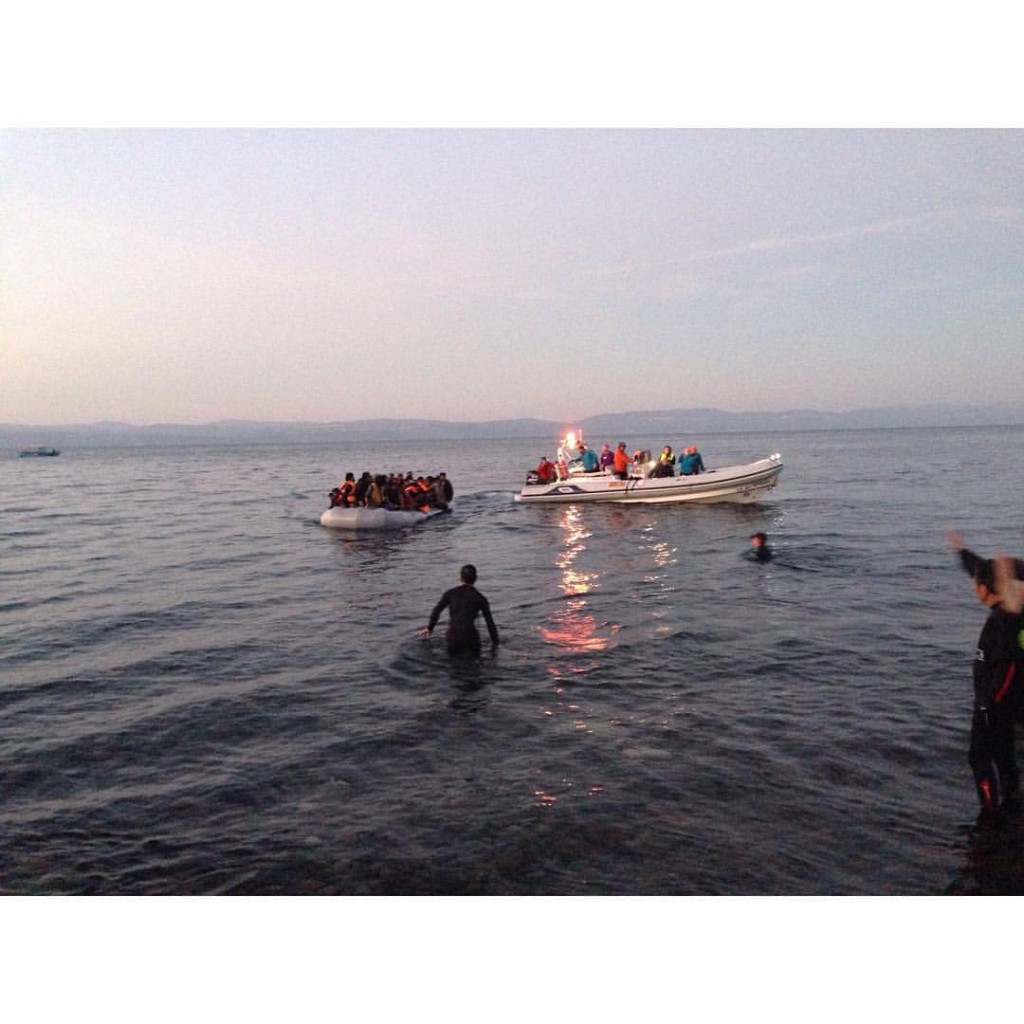A few days after the New Year, Katrin was patrolling the beach on Lesvos – looking out to the horizon for boats. But on this particular night, she and her fellow volunteers didn’t expect any. Heavy rain and gale-force winds lashed the beach, while flashes of lightning in the distance kept exposing the white caps of the rough seas stretching out before them.

The winds eased a little and the volunteers caught a glimpse of a familiar light on the horizon – the flashlight of an iPhone. Another light appeared, faint at first, but gradually getting more intense. They flashed the headlights of their car in the direction of the boat. The tiny lights flashed back and more lights appeared. Amidst the wind and rain, the little cluster of lights appeared to move slowly but steadily towards the beach. But then it started to drift further and further south until they lost all visual and the boat disappeared beyond the horizon. A search boat was sent to look for them, but it was tossed around by the waves and couldn’t spot them.
Katrin felt sick. How many people did I just watch being washed away?
The next night, a similar scene. Three boats had left Turkey in the days before, carrying 99 asylum seekers. It was soon reported that at least 34 bodies had been washed up on the coast of Turkey.
Australian Katrin Collison spent December and January meeting boats of asylum seekers on Lesvos Island in Greece. Katrin grew up in Kenya, the daughter of missionaries, and had planned a year off work to travel. This included a week on Lesvos in November, with a friend whose father was born on the island. They took over 100kg of donated goods to give to refugees, and Katrin ultimately felt drawn to return for a longer stint.
With over two million refugees in Turkey from Syria’s civil war, many pay people smugglers thousands of dollars for the risky crossing to Lesvos and other islands in the Mediterranean. In 2015, over 500,000 asylum seekers arrived on Lesvos alone.
“People smugglers are just so cruel,” says Katrin. “People arrive saturated on boats that are nothing more than an inflatable dinghy, wearing dangerously poor life vests they have usually paid a lot of money for.”
The smugglers disconnect their boat from the refugees’ dinghy when they are close to the maritime border to avoid the coastguard, forcing them to continue alone without direction. Most of the refugees cannot swim.
One 15-year-old Syrian boy told Katrin how he had been thrown into the water after the smuggler had stabbed the boat with a knife. He had lost his phone, leaving him with no way to contact his father who he had left behind.
The stories are endless. Katrin recalls a woman who had just seen her husband killed and children taken by his family, and her relative with two small children had seen his wife killed only a week earlier. They had no choice but to leave.
Katrin says, “I had absolutely no idea about the sheer magnitude of it all until I saw it firsthand. It becomes so much more personal when you are involved in it. It’s two months that I won’t ever forget.”
Email This Story
Why not send this to a friend?



